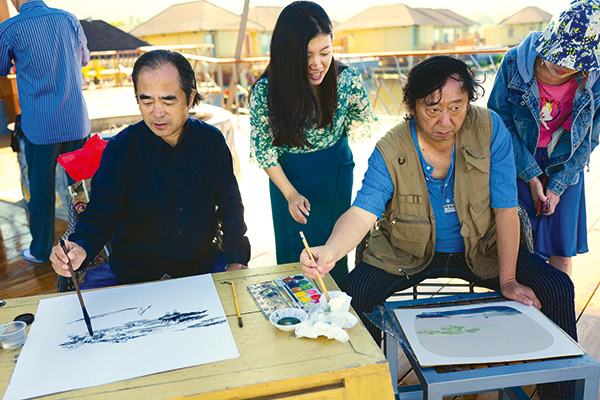 |
|
Intrigued by the one-leg rowing skill unique to Inle Lake, artists Zhang Yaoming (left) and Yang Xun sketched on the dock in the morning. [Photo provided to China Daily] |
Zhou Yanzhao, chairman of the Chinese Culture and Art Federation and an international art critic, who accompanied the tour, said art acts as an effective medium of communication in the Belt and Road Initiative. "Art helps to channel one culture into the other and establishes mutual recognition with other cultures. The mutual understanding is built through connectivity, which is an unconscious and a gradual process," he said.
Zhou added that collaborative painting, an important part of the Myanmar art trip, is a good example of how artists can bond and attain harmony through cooperation.
The artists spent an afternoon in Mandalay visiting the Kuthodaw Pagoda, which is renowned for containing the world's largest book-a giant stone tablet at the foot of Mandalay Hill inscribed with text from the Buddhist Tripitaka. The shimmering gold-plated stupa, ubiquitous domed white shrines, delicate mural paintings and a relatively peaceful vibe invoked the artists' desire to paint on the spot.
Next was a visit to the Myanmar Chinese Chamber of Commerce. U Myint Naing, the chamber's executive vice-chairman, has paid much attention to art education in Myanmar.
Art education providers are in short supply in the country and awareness is low, he said. He has approached well-established art schools and troupes in China, hoping to co-launch exchange programs. Under construction is a vocational school with the support of Yunnan University, in Southwest China, where art courses will be available.